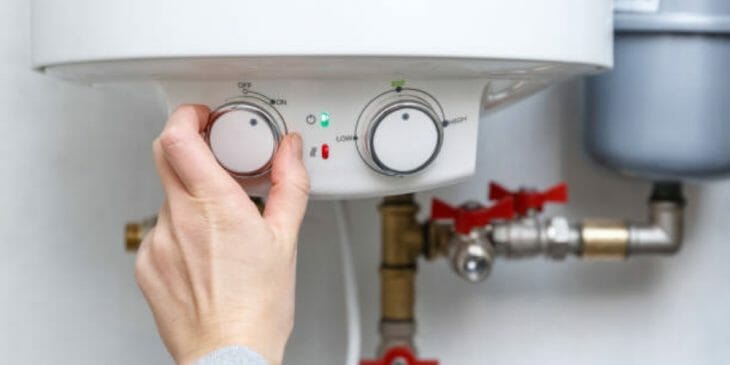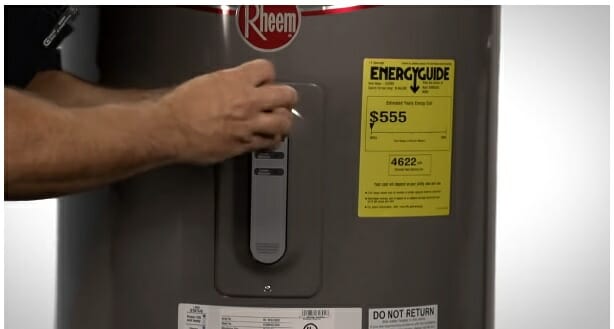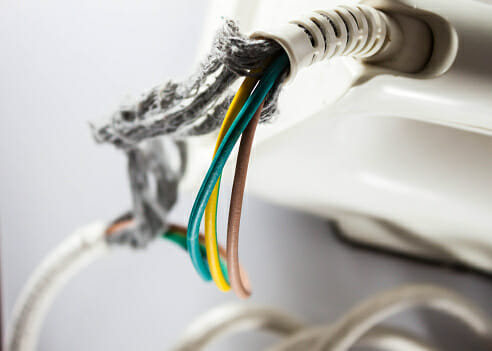How to Test a Water Heater Element Without Multimeter (DIY)

Does your electric water heater struggle to heat, run out of hot water, or doesn’t produce any hot water at all? Testing your heating element will help you diagnose the problem.
In general, there are two processes to test water heater elements; defective element testing and short circuit testing.
However, you might think it would be impossible to do so without a multimeter tester. You’re mistaken because, in this guide, I will teach you a do-it-yourself (DIY) process to test a water heater element without a multimeter.
Reasons Why Water Doesn’t Heat Up

There are other reasons for the lack of hot water. Verify whether the circuit breaker is switched on and not tripped before testing the elements.
Also, immediately above the higher thermostat, hit the reset button on the high-temperature cutoff. You may resolve the problem by resetting the circuit breaker or the high-temperature cutoff, but it may still have an electrical problem as a root cause in the first place.
Test water heater elements if they trip again.
Testing Water Heater Element: The Two Processes

Materials Needed
- Noncontact voltage tester
- Long-nose pliers
- Screwdriver
- Heating element
- Heater element wrench
- Continuity tester
Setting Up
Before we proceed to the types of processes about how to test water heater elements without a multimeter, let us first examine the electric water heater that we will be working on for safety purposes:
Cover Plates Should Be Removed
- At the circuit breaker, turn off the electricity.
- To access the thermostats and elements, remove the metal covers.
- Make sure the power is turned off using a noncontact voltage tester to touch the electrical connections.
Examine The Wires
- Examine the cables that lead towards the water heater.
- You’ll need to remove the metal cover with your screwdriver first to get through the elements.
- Remove the insulator and hold the tester near the wires coming into the top of the high-temperature cutoff switch.
- Place the tester against the water heater’s metal shell.
- It’s okay to test water heater elements if the tester doesn’t light up.
First Process: Defective Element Testing
You will need the use of your continuity tester here.
- The wires must be disconnected from the terminal screws.
- Connect one of the element screws with the alligator clamp.
- With the tester probe, touch the other screw.
- Do a heater element replacement if it does not illuminate.
- It is not defective if it does not illuminate.
Second Process: Short Circuit Testing
- The alligator clip should be attached to one of its element screws.
- Touch the element mounting bracket with the testing probe.
- Carry out the test on all of the remaining elements.
- There is a short if the tester light comes on; at which point there is a need for water heater element replacement.
Note: After you test water heater elements and are in excellent shape, your thermostats or cutoff switch is probably the source of the problem. Replacing both of them will resolve it. But if it is defective, here’s a guide for your water heater element replacement:
Replacing The Defective Element

Step 1: Take Out the Bad Element
- Close the inlet valve for cold water.
- Turn on your kitchen’s hot water faucet.
- Connect your water hose to the drain valve and open it to drain the tank.
- With a heater element wrench, unscrew the old element.
- To turn the socket, you’ll need a long, firm screwdriver.
- Loosen the threads using a cold chisel and hammer if it won’t unscrew.
Step 2: Putting the New Element In Place
- Place the new element into your electric water heater with your heating element wrench and tighten it.
- Reconnect the wires, ensuring they are securely connected.
- The insulation and metal coverings should be replaced. And you are all done!
FAQs
Are all the elements of an electric water heater the same?
The top and bottom heating elements are similar, and the upper and lower thermostats and the high limit device control the temperature. The size of electric water heater elements varies, but the most common is 12′′. (300 mm). (1)
What happens when a heating element fails?
The heating elements within an electric water heater break, resulting in a loss of hot water. Your water may start to chill down gradually since the water heater element has burned out. You will only get cold water if the second water heater element fails. (2)
What does the reset button do?
Your electric water heater’s reset button is a safety feature that turns off the power to your water heater when the temperature within it reaches 180 degrees Fahrenheit. The reset button is also known as the emergency cutoff switch.
Some other multimeter learning guides we’ve listed below that you can check or bookmark for later reference.
- How to test a capacitor with a multimeter
- How to test fuses with a multimeter
- How to test Christmas lights with a multimeter
References
(1) temperature – https://www.britannica.com/science/temperature
(2) heating – https://www.britannica.com/technology/heating-process-or-system
